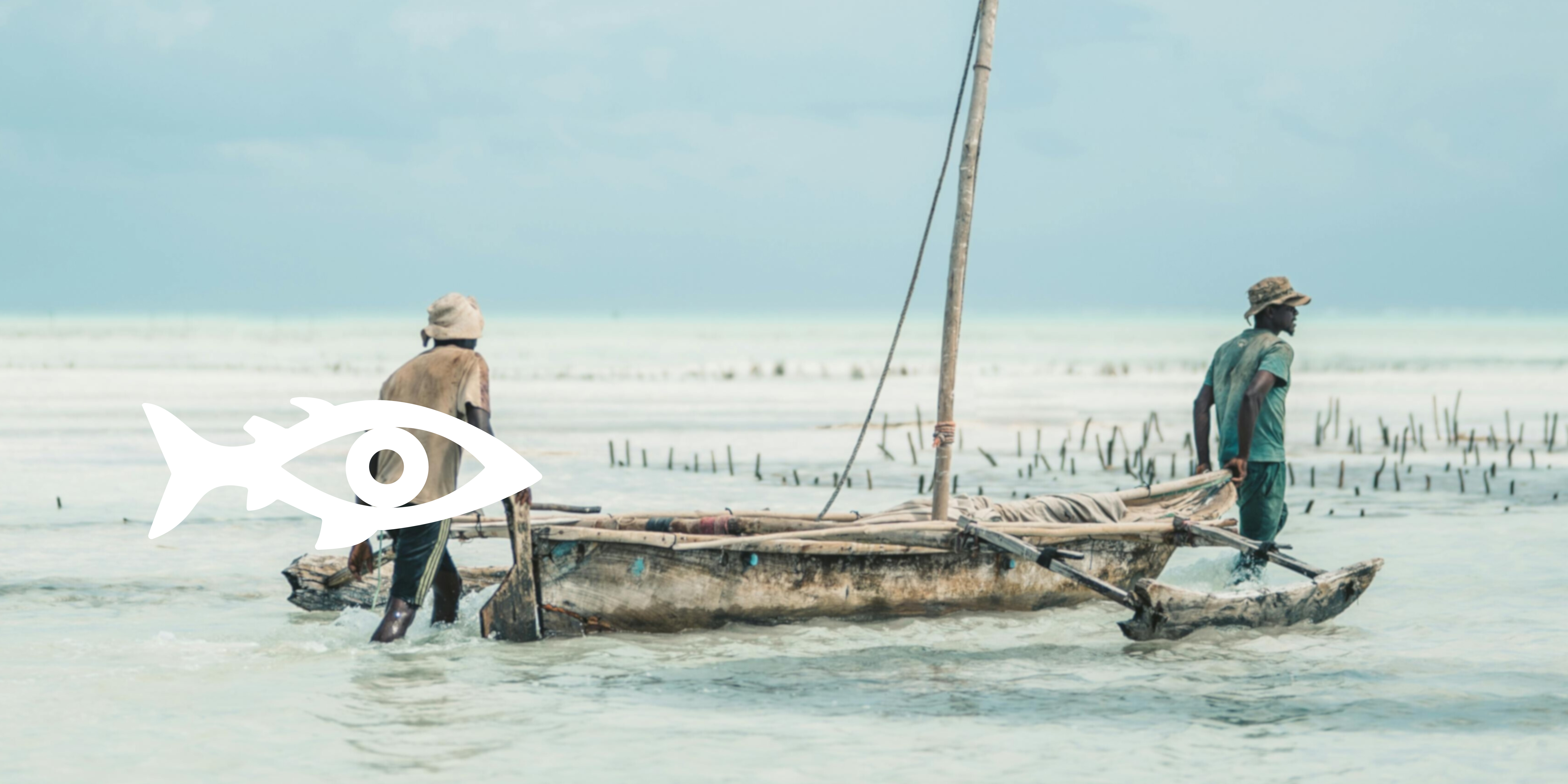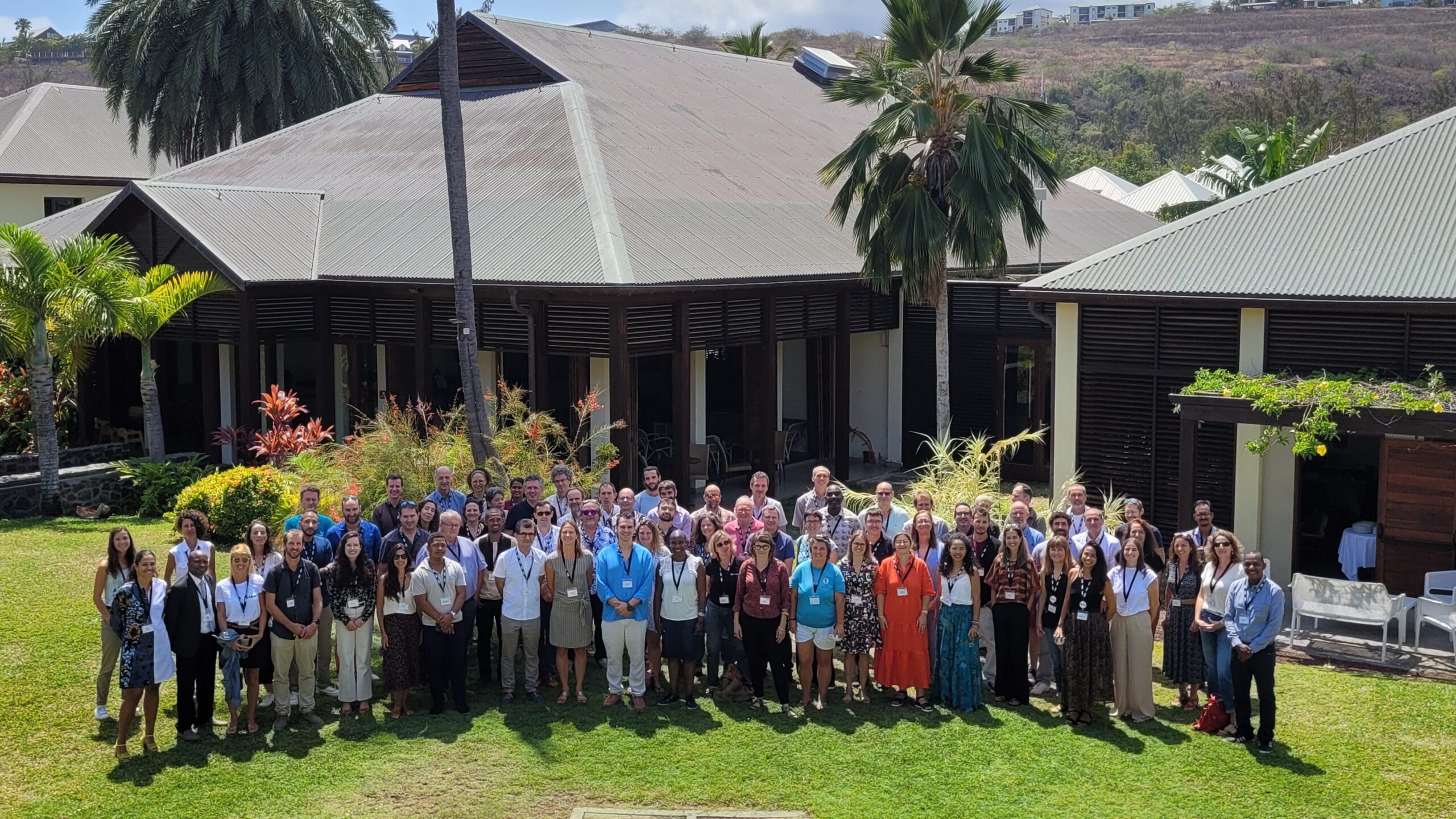
UNDERSTANDING BRIDGES AVATAR
In the Mozambique Channel, how can physico-biogeochemical modeling be used to better anticipate the distribution of marine species?
Key issues for fisheries and biodiversity
The Mozambique Channel is a strategic ocean corridor, linking the coastal ecosystems of Madagascar and Mozambique. Its ocean dynamics have a direct influence on the biogeochemistry (transport and transformation of chemical elements such as nutrients and chlorophyll) of the region, and therefore on marine ecosystems.
The avatar of the regional site will therefore need to incorporate ocean process modeling to anticipate ecological variations in large pelagics such as tuna.
Complex little-understood processes
The Mozambique Channel is a complex oceanic zone, dominated by large anticyclonic rings. These eddy structures, up to 200 km in diameter and 2 km deep, generate powerful currents (1 to 2 m/s). They strongly influence the biogeochemistry of the region, notably by modulating the distribution of nutrients. They therefore impact marine ecosystems (Malauene et al, 2024; Penven et al, 2025). The processes involved are:
- Vertical movements (upwellings) of water masses locally, in eddies or at their periphery: these allow nutrients to rise from the depths to the surface, promoting primary production (phytoplankton). This stimulates the food chain right up to top predators such as tuna (Ternon et al, 2014). The latter exploit these transitional habitats to feed, taking advantage of the conditions created at the heart and periphery of the eddies (Tew Kai & Marsac, 2010).
- The horizontal transport of organic matter and/or nutrients (such as nitrates), from the coasts (where the Zambezi, Pungue or Limpopo rivers flow), towards the open sea, trapped in the heart of the eddies or transported by the filaments; this transport of matter favors the creation of more nutrient-rich habitats.
- In addition, eddy dynamics would promote ecological connectivity between Madagascar and the African continent (Hancke et al., 2013) via this horizontal transport.
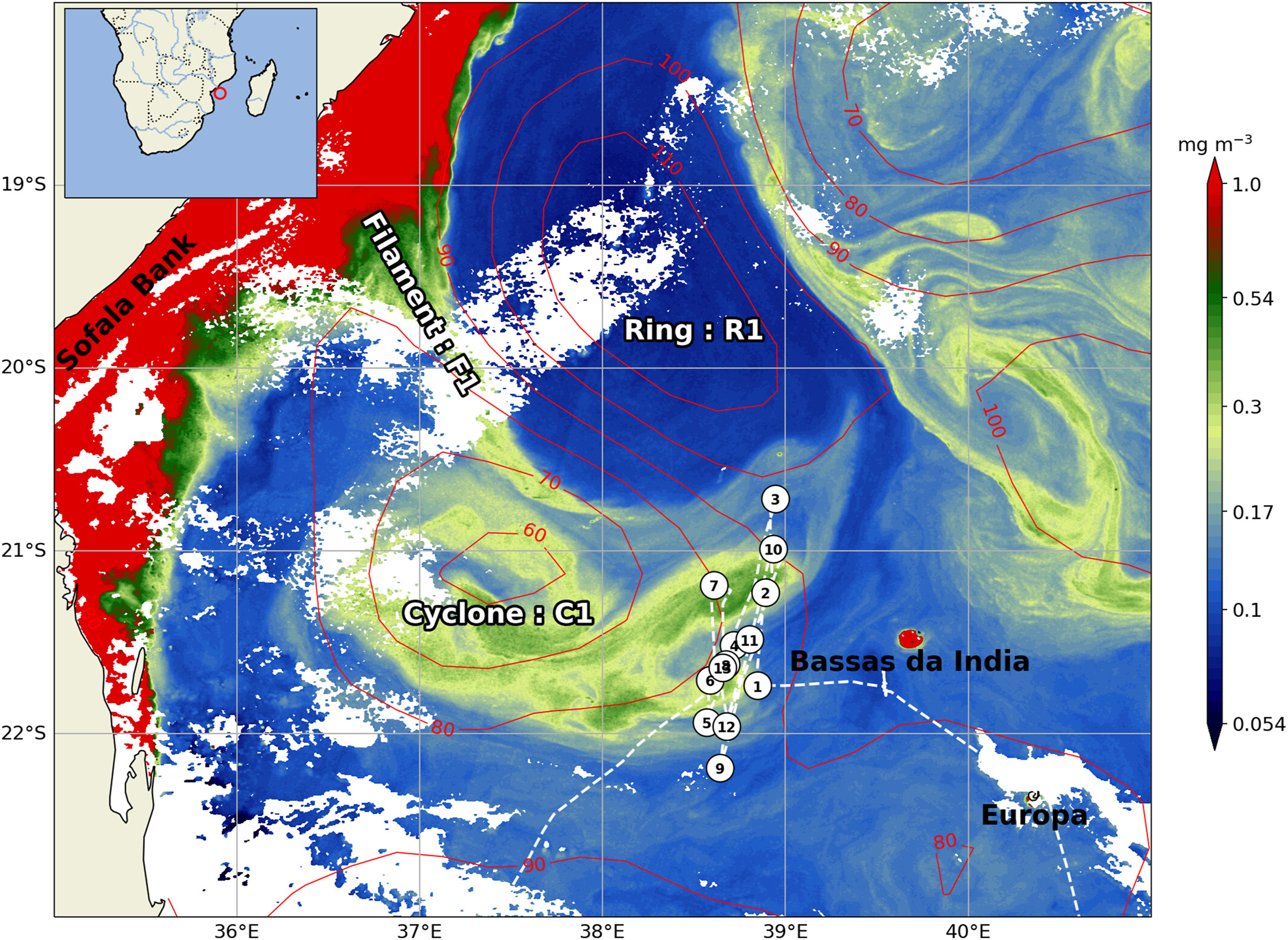
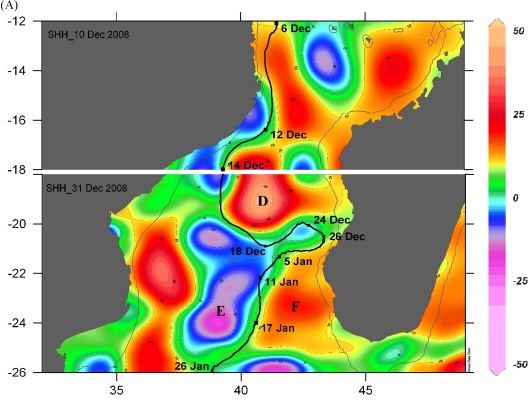
Figures taken from Hancke et al. 2013: Trajectory of drifting float 71201 superimposed on sea level anomalies (cm)
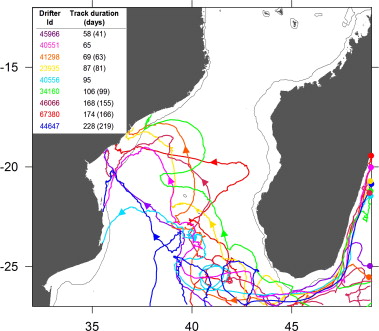
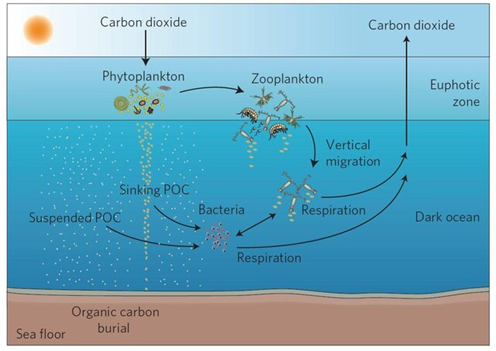
Focus on: Aline Arens’ thesis
On March 25, Aline Arens presents the subject of her thesis, which she started in November 2024 within BRIDGES AVATAR (co-funded by UBO). This thesis aims to gain a better understanding of biogeochemical flows in the Mozambique Channel.
She develops high-resolution numerical simulations using the CROCO-PISCES model, which couples ocean dynamics and biogeochemical processes. These simulations are calibrated using in situ and satellite data.
Her research focuses on several aspects:
● The modeling of coastal nutrient fluxes and their dispersion in the Mozambique Channel.
● The impact of eddies on the distribution of biogeochemical elements.
● The comparison of nutrient inputs between different mechanisms (turbulent transport, island mass effect, upwelling).
This work will provide key information for the regional numerical avatar developed in BRIDGES AVATAR.
Thesis supervisors: P. Penven (HDR), F. Chenillat, S. Pous, F. Nehama, B. Malauene
Portrait
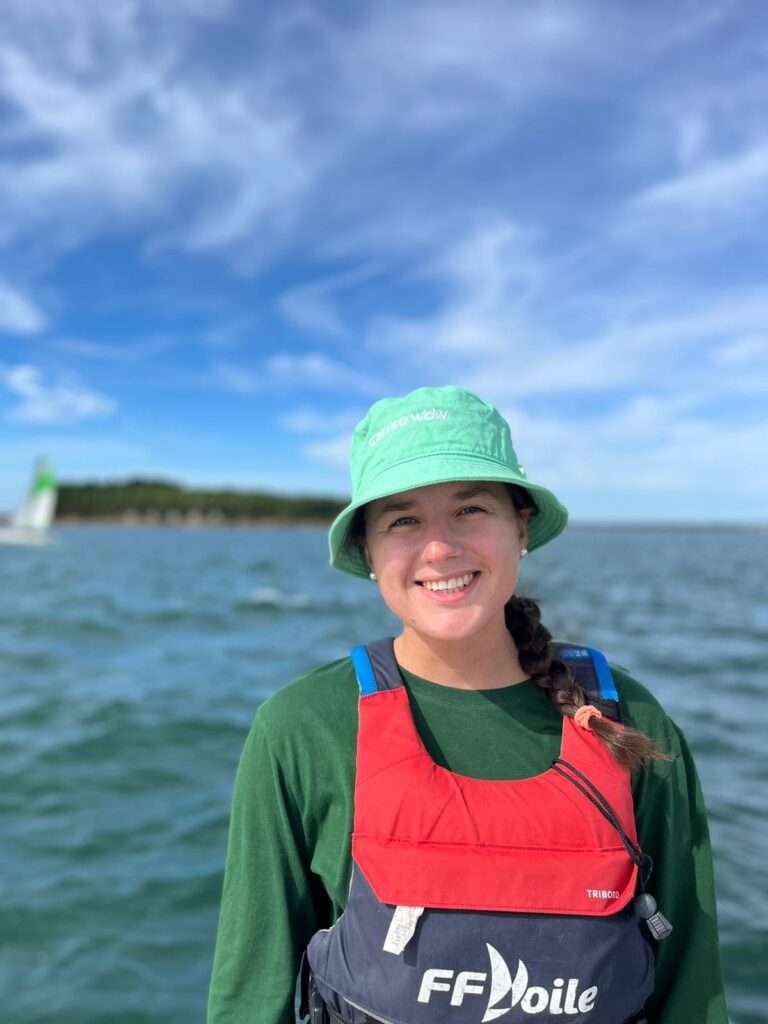
Aline Arens is an oceanographic engineer with a double degree from the IMT Atlantique engineering school and the UBO, specializing in oceanographic data analysis. She has been a PhD student at LOPS (Plouzané, France) since November 2024. This thesis follows on from her end-of-study internship at Actimar (Brest, France), which enabled her to develop an interest in the Indian Ocean and more specifically the Mozambique Channel. This region, with its complex yet little-understood dynamics, provides an opportunity to explore a number of research topics, including the impact of eddy activity on biogeochemistry through coupled physical-biogeochemical modeling, on which Aline will be working.
References
Malauene, B. S., Lett, C., Marsac, F., Penven, P., Abdula, S., Moloney, C. L., & Roberts, M. J. (2024). Influence of Mozambique Channel eddies on larval loss of two shallow-water commercial shrimp species. PLOS Climate, 3(6), e0000414. https://doi.org/10.1371/journal.pclm.0000414
Ternon, J., Bach, P., Barlow, R., Huggett, J., Jaquemet, S., Marsac, F., Ménard, F., Penven, P., Potier, M., & Roberts, M. (2013). The Mozambique Channel : From physics to upper trophic levels. Deep Sea Research Part II Topical Studies In Oceanography, 100, 1‑9. https://doi.org/10.1016/j.dsr2.2013.10.012
Tew Kai, E.., & Marsac, F. (2010). Influence of mesoscale eddies on spatial structuring of top predators’ communities in the Mozambique Channel. Progress In Oceanography, 86(1‑2), 214‑223. https://doi.org/10.1016/j.pocean.2010.04.010
Penven, P., Ternon, J.‐F., Noyon, M., Herbette, S., Cambon, G., Comby, C., et al.
(2025). Characterizing the central structure of a mesoscale eddy‐ring dipole in the Mozambique Channel from in situ observations. Journal of Geophysical Research: Oceans, 130, e2024JC021913. https://doi.org/10.1029/2024JC021913
Hancke, L., Roberts, M., & Ternon, J. (2013). Surface drifter trajectories highlight flow pathways in the Mozambique Channel. Deep Sea Research Part II Topical Studies In Oceanography, 100, 27‑37. https://doi.org/10.1016/j.dsr2.2013.10.014
Drouet, Kévin. (2020). Impact de la température sur la biogéographie et la phénologie des dinoflagellés benthiques toxiques du genre Ostreopsis en Méditerranée et en Atlantique.
More news News

